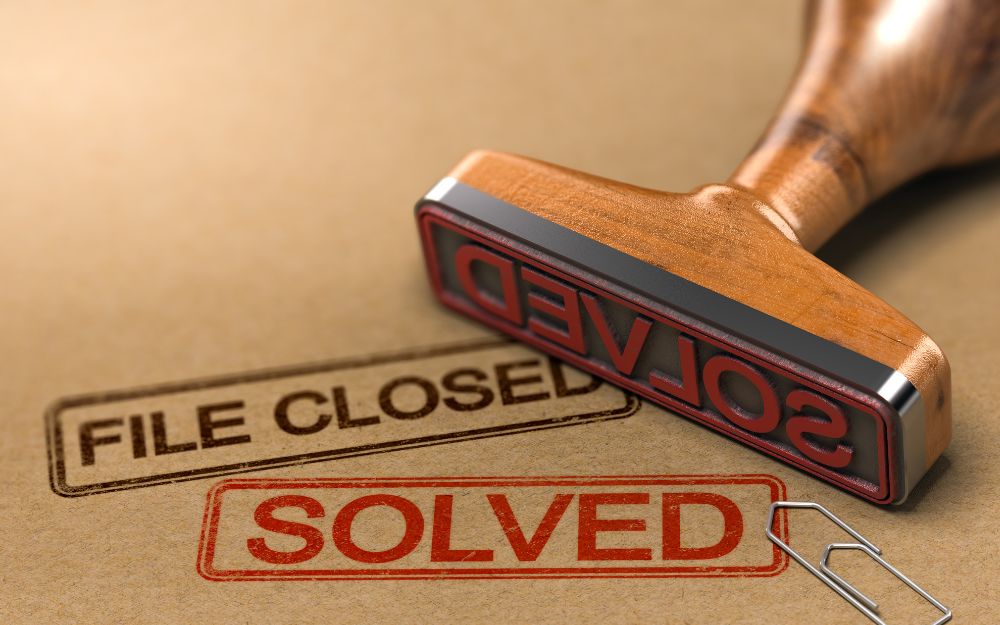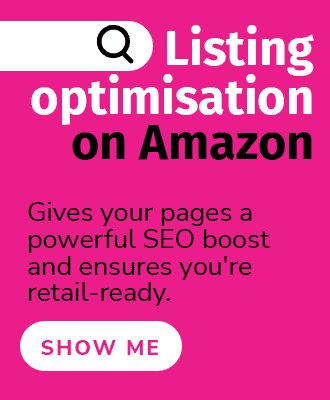It was a cold, dark April evening; Joe sat down at his laptop, ready to review Brand Analytics before heading to bed, when, from the corner of his eye, he noticed something on his listing… the Buy Box was missing. It was there that very morning… He rubbed his brow and leant back in his chair as he pondered… ‘Who was the culprit?’ and ‘How would he ever get it back?’… Another case for… eCommerce Nurse – let’s crack this wide open!
The Buy Box (when it’s present) is the primary source of sales on both desktop and mobile devices. Over 80% of total Amazon sales happen through that magical box, so if it’s missing, it will seriously impact your chances of making a sale.
A highly sought-after feature, its prominence on the product listing page makes it a default customer purchasing option. Its absence is significant, and sellers should try to avoid it at all costs. Join us as we investigate the what, where, why, who and how of the missing Buy Box. Let’s start with the basics.
What is the Buy Box?
Essentially, the Buy Box is a shortcut to sales. It simplifies purchasing activity with the ‘Add to Cart’ and ‘Buy Now’ buttons to expedite customer spending. When a buyer selects “Add to Cart”, the seller who has the Buy Box at that moment (the Buy Box winner rotates – don’t worry, we’ll get to that) gets the sale. This handy feature allows customers to make a quick purchase without considering who they buy from (Amazon or a third-party seller).

Why is it important to win the buy box?
The Buy Box boosts a brand's visibility and sales potential. When multiple sellers are selling the same product, only one will get the coveted Buy Box. There is no limit on the number of sellers on the Amazon platform or the number of products they can market, so the placement of those buttons positions the seller at an advantage, as most shoppers will go directly to purchase without scrolling through the other sellers. Being assigned the Buy Box increases conversion rates and leads to more money in the bank.
In addition, listings without a Buy Box don’t get shown in Sponsored Products ads – so on top of losing out on sales, you also get the double-whammy of less traffic to your listing!
Amazon vs the world
On Amazon, you’ve got two seller categories, Amazon (duh) and third-party sellers (3P).
Say, you’re selling a coat rack, but there are 20 other sellers all selling the same coat rack; you’re all in direct competition for that highly desirable Buy Box – when the shopper lands on the product page, Amazon will decide which seller’s details will appear in the Buy Box listed under ‘sold by’.
The seller in the Buy Box is not a permanent fixture and can change regularly – the selection is based on a highly complex set of metrics. Sometimes the algorithm will choose a new winner, and sometimes it will be the same seller as before. This somewhat confusing speed-dating style rotation system is all hidden from the customer, who only sees 1 Buy Box seller per hour — however — if the seller changes the product's price, their performance rating drops or inventory details change, Amazon may rotate that precious box to another seller before those precious 60 minutes are up…
This super competitive battle of the Titans gets even more interesting when you consider that Amazon Retail often wins the Buy Box, where Amazon has an offer for the same product… Yes, Amazon Retail's perfect customer metrics will often surpass any 3P seller, but hey, you’ve got to be in it to win it, and information is everything, so let's investigate further.
How does it work?
Not all sellers are eligible to win the Buy Box.
Amazon’s line is that the Buy Box is designed to “give customers the best possible shopping experience”. Ensuring “sellers must meet performance-based requirements to be eligible to compete for Buy Box placement.”
Essentially, the algorithm considers multiple variables to determine which listing offers the best combination of value for money and high seller performance. Those variables may change depending on the product or category, but there are some mitigating factors which are within your control.
Causes of the missing Buy Box

With a broad Buy Box MO vaguely referring to giving customers ‘the best possible shopping experience’ and brands ‘meeting performance-based requirements’, you’d be right in thinking that finding the specific culprit responsible for the missing Buy Box is sometimes a little like searching for a needle in a haystack. However, the root cause generally boils down to your brand's performance and credibility.
Without labouring an exhaustive rundown of all the possible causes, here’s an overview of why your listing may be ineligible for the Buy Box.
- You’re a new 3P seller
Yup, new dogs gotta learn new tricks. As we know, the selection of the Buy Box winner is based on performance metrics. If you’re new to Amazon, you won’t have the historic performance data, which makes it tricky for Amazon bots to determine customer satisfaction. It could also be related to your fulfilment method. If you’re not using Fulfilment by Amazon (FBA), it could be seen as a concern due to potential unreliability regarding shipping speed etc. Then there’s the ultimate catch-22 – as a new seller, you won’t have sufficient reviews. Since the Buy Box MO is designed to give customers the best possible experience, you may get overlooked if you don’t have enough feedback yet to establish a positive reputation.
It’s not all bad news. The best way to navigate these choppy waters is to provide consistently excellent customer service, maintain competitive pricing, and optimise your listings to increase traffic. Over time, you’ll gain visibility and trust and improve your eligibility. - Low product sales
You guessed it; those performance metrics are out to get you again. Low product sales can affect your rank, which impacts customer engagement and conversion rates. That nifty algorithm considers pricing, shipping, AND customer satisfaction, and low sales may reflect your brand’s perceived trustworthiness and reliability.
How to fix it? Focus on sales strategies. Experiment with pricing changes, offer promotions and deals, improve your fulfilment methods, and seek reviews to boost your reputation. Increased visibility through targeted ads and marketing will help drive traffic to your listing and improve your eligibility. - Your product is less expensive on a competitor's website
This a big no-no. Amazon’s bots are VIGILANT. Scraping data off vendor websites is what gets them up in the morning. If the algorithm discovers your product on another site at a lower price, it will seek vengeance. Get ready to say cheerio to your favourite little box. The party line is that if a customer sees the same product elsewhere for a lower price, they're less likely to use Amazon, and thus, it’s self-protection for Amazon’s brand.
This one isn’t a straightforward fix. If you’re a 3P seller, you’re unlikely to have any sway over the brand you’re selling to stabilise pricing across all platforms. If you’re the brand, you must avoid offering other websites discounts that aren’t also available to Amazon Retail and 3P sellers. It’s a costly reminder that it’s essential to ensure price parity across all platforms – Big Brother, aka Amazon, is watching. - Your listing is broken
The last thing you want, but an unfortunate reality, is that sometimes these brilliant technological rectangles we rely on fail us. The same goes for the Amazon platform. If you’re a high-performing seller with fair prices, great reviews, and FBA, there’s a chance that there’s an issue with the listing software.
A problem shared is a problem halved – the best way to rule out listing issues is by contacting the CAPTIVE team through Seller Central.
You can sleep easy
Some problems are out of your control; however, most issues with a missing Buy Box are influenced by the brand’s conduct on and off Amazon. Get a head start on your competition by following these easy steps:
- Review your performance – are you doing all you can to ensure your customers have a positive shopping experience?
- Sign up for FBA – don’t give the algorithm a reason not to trust your shipping reliability.
- Maintain an equal price between Amazon and your other vendors (or ensure Amazon is the lowest price).
- Review your listings for mistakes or errors, and optimise your content.
Preemptive action is critical. Address issues before they become, well, issues and get in touch with Amazon if they’re giving you a hard time on a listing.
Case closed

Well, folks, that’s case closed on the mystery of Joe’s missing Buy Box. He was the culprit all along – caught red-handed overpricing his products, failing to deliver goods on time, and neglecting his customers!
If you have your own Amazon conundrum and are coming up short, contact our eCommerce Nurse team. Comprised of ex-Amazonians and Amazon experts – we’ve got the nous and know-how to crack your case wide open.




